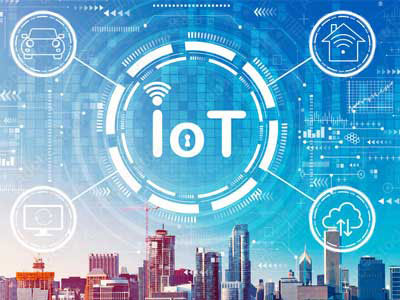Key Takeaway
The basic purpose of IoT (Internet of Things) is to connect devices to the internet. This allows these devices to collect, share, and analyze data. Through IoT, devices can be monitored and controlled remotely. For example, smart thermostats can adjust temperatures based on your preferences, or smart lights can be turned on or off via your phone. IoT helps improve efficiency, convenience, and safety in various applications, from homes to industries. By connecting and automating devices, IoT creates smarter environments and enhances our daily lives.
Simplifying Everyday Tasks with IoT
IoT technology simplifies our daily tasks by automating processes and providing real-time information. Imagine your smart fridge alerting you when you’re out of milk or your thermostat adjusting itself to your preferred temperature as you arrive home. These conveniences, powered by IoT, save time and energy. Smart home devices like lights, locks, and cameras can be controlled remotely via smartphone apps, offering unprecedented control and peace of mind. This seamless integration into our daily routines exemplifies how IoT simplifies life, making it more efficient and manageable.

Enhancing Industrial Processes
In industrial applications, IoT is a revolutionary force. It optimizes operations by enabling real-time monitoring and data analysis, which leads to better decision-making and increased efficiency. For example, sensors on manufacturing equipment can predict maintenance needs. This predictive maintenance reduces downtime and extends machinery life, ensuring continuous production. Additionally, IoT significantly enhances supply chain management by improving tracking and inventory management, ensuring timely deliveries, and reducing waste.
IoT also plays a critical role in enhancing workplace safety. By continuously monitoring environmental conditions and equipment performance, IoT systems can prevent accidents before they happen. For instance, sensors can detect hazardous conditions and alert workers, allowing them to take necessary precautions. The Industrial Internet of Things (IIoT) transforms processes, making them smarter, faster, and more reliable. This transformation not only improves productivity but also ensures a safer and more efficient work environment. In short, IoT is the key to modernizing industrial operations and maintaining a competitive edge.
IoT for Improved Safety and Security
Safety and security are critical, and IoT is driving significant advancements in these areas. IoT-enabled security systems offer real-time surveillance, alerting homeowners and businesses to potential threats. For example, smart locks and doorbells enhance security by allowing remote monitoring and control, giving users peace of mind even when they are away. In public spaces, IoT helps manage traffic flow, reducing congestion and enhancing road safety.
Wearable IoT devices also contribute to safety by monitoring health conditions and sending alerts in case of medical emergencies. These devices are particularly useful for individuals with chronic health conditions, ensuring they receive timely assistance. By integrating IoT into safety and security protocols, we can create safer environments at home, in the workplace, and in public spaces. This integration ensures quick response to potential issues and enhances overall security. IoT not only improves safety but also provides a sense of security, knowing that advanced technology is constantly monitoring and protecting various aspects of our lives.
Enabling Smart Environments with IoT
Smart environments are transforming daily life, largely due to IoT technology. In smart cities, IoT is key to efficient resource management, optimizing everything from energy consumption to waste management. For instance, streetlights equipped with IoT sensors adjust their brightness based on pedestrian activity, significantly reducing energy waste. This intelligent approach ensures energy is used only when needed. Additionally, public transportation systems utilize IoT to provide real-time updates, enhancing the commuter experience by making travel smoother and more predictable.
In office settings, IoT devices play a crucial role in creating comfortable and productive workspaces. These devices monitor and adjust lighting and climate controls automatically, ensuring optimal conditions throughout the day. The benefits are clear: improved employee comfort and increased productivity. Smart environments leveraging IoT are not just about convenience—they are about making our surroundings more responsive, sustainable, and user-friendly. This seamless integration of IoT into daily operations demonstrates the profound impact this technology has on enhancing the quality of life.
Future Purpose and Potential of IoT
The future of IoT is brimming with potential, promising to revolutionize various sectors as technology advances. One of the most exciting prospects is the development of autonomous vehicles. Powered by IoT, these vehicles will offer safer and more efficient transportation solutions, reducing accidents and improving traffic flow. The agriculture sector will also see significant benefits. Smart agriculture, driven by IoT, will optimize food production processes, addressing global food security challenges by ensuring higher yields and more efficient resource use.
Healthcare is another area poised for transformation through IoT. Personalized medicine and remote patient monitoring will become more prevalent, improving patient outcomes and reducing healthcare costs. Patients will benefit from real-time health data, enabling timely interventions and more personalized care plans. Additionally, the environmental impact of IoT cannot be overstated. Smarter energy grids and water management systems will conserve vital resources, contributing to a more sustainable future.
The future of IoT is indeed bright, with endless possibilities to enhance our lives and address global challenges. As IoT becomes more integrated into our daily lives, its benefits will only grow, making our world smarter, more efficient, and more connected.
Conclusion
The core purpose of IoT is to connect devices and systems to the internet, enabling them to collect and share data for improved efficiency, safety, and convenience. By simplifying everyday tasks, enhancing industrial processes, improving safety and security, enabling smart environments, and holding future potential, IoT is a transformative technology with far-reaching impacts. As we continue to integrate IoT into various aspects of our lives, it will undoubtedly drive innovation and improve quality of life, making our world smarter, safer, and more efficient.
